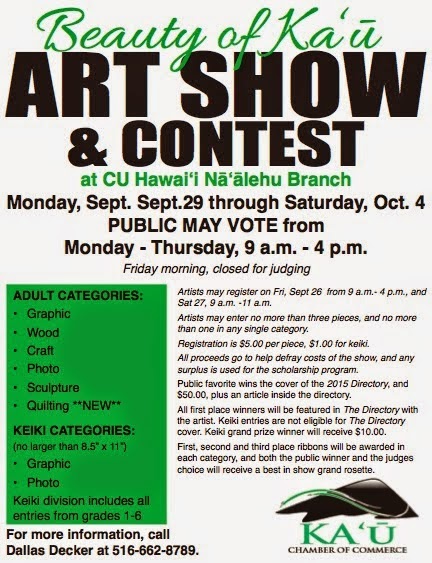| Fuzzy table oral, one of the Hawai`i species left off the threatened list. Photo from NOAA |
NOAA defines threatened as those “likely to become an endangered species within the foreseeable future throughout all or a significant portion of its range.” NOAA concluded that the Hawaiian species are not in danger of extinction.
The candidates proposed to be listed in Hawai`i included Montiporal corals, the blue rice – flabellate, the dilitata and turgenscens. The blue rice is the coral that has been dying off on Kaua`i but is found in nearshore waters of all the Hawaiian Islands, through French Polynesia and on the other side of the globe in the Red Sea. Montipora flabellate, dilatata and turgescens are encrusting corals with lobelike growths. They are blue, but can photograph pink. They can also be brown or purple. They are found in most reef environments.
| Spreading or sandpaper rice coral that did not make the threatened list. Photo from NOAA |
The Montipora patula and verrilli, which were also cut from the proposed list for Hawai`i, are called spreading or sandpaper rice coral. The colonies are tan with purple polyps and grow flat or in tiers of overlapping plates in shallow reef environments with wave action.
Another coral in Hawai`i that did not make the cut was Acropora paniculata, the fuzzy table coral. Colonies are cream, grey or blue and are found on upper reef slopes, just below the low tide mark, close to shore.
Four of the corals from the Pacific that are now officially named threatened are from Guam, the first time that Guam coral has been protected by NOAA. Eight of the newly listed species are in waters of American Samoa.
The Center for Biological Diversity filed the petition to list 83 corals as threatened, including those from Hawai`i. A statement from the non-profit based in San Francisco said: “The world’s coral reefs are in crisis from global warming and acidifying oceans.” The organization refers to coral reefs as rainforest of the ocean that enhance marine diversity, protect the shoreline and support fisheries, tourism and local economies. “This is a wakeup call that our amazing coral reefs are dying an dneed federal protection, but there’s hope for saving corals.” The organization recommends making cuts in greehouse gas pollution to stop global warming and ocean acidification.”
| Montipora verilli, an encrusting coral left off the list. Photo from NOAA |
NOAA also acknowledged that global warming and ocean acidification are being taken into consideration when placing species on the endangered and threatened lists.
See more at www.fisheries.noaa.gov and www.biologicaldiversity.org.
To comment on or like this story, go to facebook.com/kaucalendar.
EVERYONE IS INVITED TO PARTICIPATE in upcoming free events and hikes at Hawai`i Volcanoes National Park’ Kahuku Unit beginning this Sunday.
Palm Trail is a moderately difficult 2.6-mile loop traversing scenic pastures along an ancient cinder cone, with some of the best panoramic views Kahuku has to offer. Highlights include relics of the ranching era, sections of remnant native forest and volcanic features from the 1868 eruptive fissures. A guided hike of Palm Trail is offered Sunday, Aug. 31 and Saturday, Sept. 20 from 9:30 a.m. to 12:30 p.m.
During Kahuku: Born from a Hotspot, participants learn about the birth of the islands from the Hawaiian hotspot and about the past eruptions that impacted Kahuku. Visitors will be able to identify various pu`u (hills) and other volcanic features and learn about their formation. Kahuku: Born from a Hotspot is offered Monday, September 1 (Labor Day) from 9:30 a.m. to 11:30 a.m.
 |
Palm Trail Hike affords expansive views of the Ka`u Coast. Photo from NPS |
People and Land of Kahuku is a moderate two-mile, three-hour guided hike that loops through varied landscapes to explore the human history of Kahuku. Participants learn about the powerful natural forces at work here and how people have adapted to, shaped and restored this land. The guided hike is offered Saturday, Sept. 13 and Sunday, Sept. 28 from 9:30 a.m. to 12:30 p.m.
During Hi`iaka & Pele, participants discover two Hawaiian goddesses, sisters Pele and Hi`iaka, and the natural phenomena they represent. Visitors experience the sisters coming alive through the epic stories depicted in the natural landscape of Kahuku on this easy 1.7-mile walk on the main road in Kahuku. The Hi‘iaka and Pele program is offered on Sunday, Sept. 21 from 9:30 a.m. to 11 a.m.
For all programs, enter the Kahuku Unit of Hawai`i Volcanoes National Park on the mauka side of Hwy 11 near mile marker 70.5, and meet near the parking area. Sturdy footwear, water, raingear, sun protection and a snack are recommended.
To comment on or like this story, go to facebook.com/kaucalendar.
 |
| Post Iselle paving and bridge building on Wood Valley Road. Photo by Julia Neal |
To comment on or like this story, go to facebook.com/kaucalendar.
FARMERS AND RANCHERS have until Dec. 31 to apply for Tropical Storm Iselle emergency state loans of up to $100,000 at a 3 percent interest rate. Loans applications for $50,000 or less will not require credit denials from financial institutions. The state Board of Agriculture also waived a three-year residency requirement for the emergency loans. Collateral requirements, on case-by-case basis, were also waived. Ka`u farmers can call 933-9975 or 933-9977. Also see http://hdoa.hawai'gov/agl/.
To comment on or like this story, go to facebook.com/kaucalendar.
VOLUNTEERS MEET AT KILAUEA VISITOR CENTER in Hawai`i Volcanoes National Park’s to help remove invasive Himalayan ginger from park trails Friday from 9 a.m. to 12 p.m. Free; park entrance fees apply.
SUPPORT OUR SPONSORS AT PAHALAPLANTATIONCOTTAGES.COM AND KAUCOFFEEMILL.COM. KA`U COFFEE MILL IS OPEN SEVEN DAYS A WEEK.




